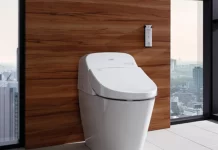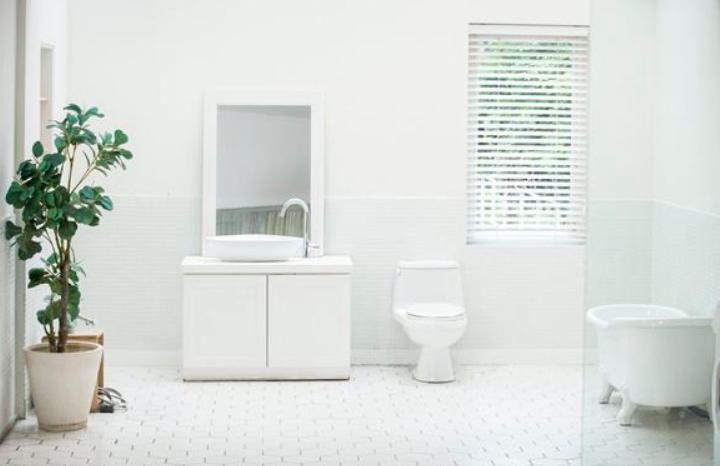Nano toilet
Rome, considered the root of ancient Western civilization along with Greece, is famous for its practical architectural skills. Representative is the Colosseum. Many places have collapsed over thousands of years, but tourists are attracted by the overwhelming grandeur that is still alive.
Interestingly, one of Rome’s greatest architectural legacies was the bathroom. There were about 100 flush toilets installed throughout Rome. Hundreds of years later, the concept of clean management of human waste was not found in medieval European society. Rome developed a system that mixed excrement with water and flushed it smoothly.
In the late 19th century, modern flush toilets emerged in both name and essence. Large quantities of water were heavily displaced from the porcelain toilet to flush excrement, and a policy was developed to separate contaminated water from the plumbing that carries drinking water. Humanity, belonging to the so-called developed countries, has been spared the odor and unsanitary effects of the “toilet table.”
The problem is that you have to pay for the convenience. This is due to the fact that flush toilets use a lot of water. Most toilets on the market have a water capacity of about 6 liters. This means that the average person uses more than 10 liters of water a day just for the toilet.
Saving water in the toilet
Nanomaterial coating inside the toilet bowl
Appropriate technology to save water and clean feces
Developed by researchers at the University of Pennsylvania

In this regard, researchers from the University of Pennsylvania in the United States recently published a study that drew attention in the international academic journal Nature Sustainability. It came up with a way to clean the toilet bowl with much less water than it does now.
The secret lies in coating the toilet bowl with nanomaterials. The size of the nanomaterial is quite small – only one billionth of a meter. By spreading it over the inside of the toilet bowl, a tiny so-called “bump” was artificially created.
Coating with nanomaterial in the toilet
Principal investigator Lim Hyun of the Korea Institute of Machinery and Materials explained, “The surface tension is reduced on the surface covered by nanomaterials. This means that the surface tension, which is the intrinsic force that a liquid such as water is trying to stick somewhere, falls on the surface of the nanomaterial. No matter how good the adhesive is, there are times when it is difficult to stick firmly to a scraper with a rough surface.
In nature, natural nanomaterials form in lotus petals. If you look at a lotus leaf, no matter how much it rains, the rainwater does not spread widely on the leaves and sticks together. This phenomenon occurs when the surface tension of the water is not working properly. The condensed water droplets drip down even if the lotus leaf is shaken by the wind or even tilted slightly. This keeps the lotus leaves clean at all times. To test the effectiveness of the new toilet, the researchers conducted an experiment containing a fluorescent component on a nanomaterial-covered cardboard tilted at an angle of 45 degrees from a height of 40 cm. This assumes a situation where a person is in the toilet. And thanks to the nanomaterials, we measured the amount of water required to remove a small amount of the test sample, which partially stuck to the board even after sliding down, so that the eye could not see it at all. Then we found that it took 90% less water than when we washed the toilet without the nanoparticles.
Nanomaterials

Water use for people around the world – 14 billion liters per day
That’s six times the total daily consumption in
Africa, when commercialized, it benefits 2.5 billion people in developing countries
Researchers assessed the technology as an important opportunity to introduce flush toilets in developing countries. Vaughn Taksing, a researcher at the University of Pennsylvania who was involved in the development, said: “People currently use 14 billion liters of water a day in toilets,” which is “six times the total water consumption of Africans a day,” in an interview with the British media. It is likely that this technology will help people in developing countries, who are prone to infectious diseases and odors because they do not take advantage of flush toilets, and will help reduce water consumption across the planet.
Nevertheless, 2.5 billion people in the world do not use flush toilets because of poor water supplies. Given this reality, this research achievement is a turning point that can be called a breakthrough. In the scientific community, this technology concept is called Appropriate Technology. It is a concept that refers to technology for human survival and well-being rather than large amounts of invested capital and profit maximization.
However, there is still a problem to be solved with this toilet. It is noted that the nanomaterials coated inside the toilet will gradually peel off and enter nature. Mark Mjodonic, professor of materials science and sociology at the University of London, told The Guardian, “I think the researchers will take precautions, but if the technology spreads around the world, the environmental impact of chemicals should also be considered.







